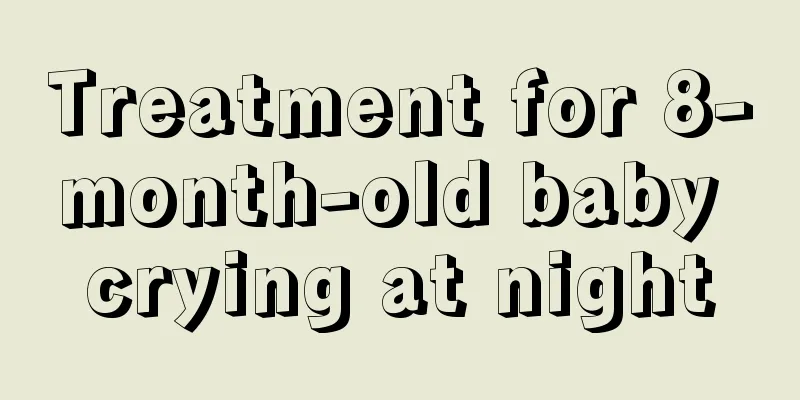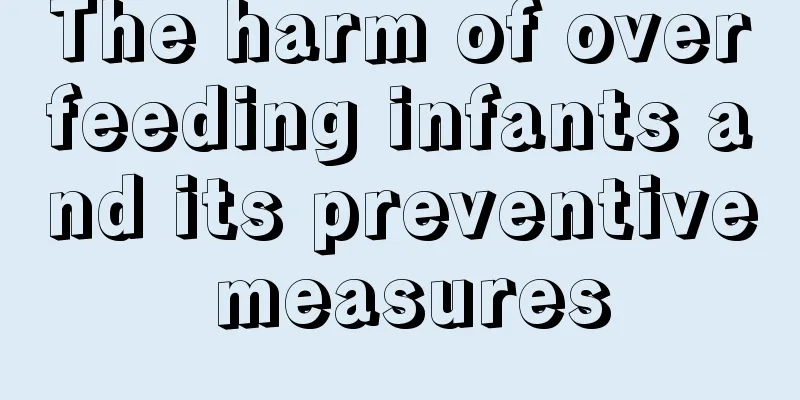What causes thigh pain in children?

|
In the hospital, we often encounter parents bringing their children to see a doctor. One of the conditions is thigh pain in children. There are actually many reasons why children have thigh pain. It doesn't necessarily mean they are sick. It may be that they are growing taller. There could be other reasons as well. So when encountering such a thing, parents should not panic due to over-exertion. First, find out the reason and then decide how to solve it. Next, I will explain to you what causes thigh pain in children, and also give parents some experience so that they will know what to do when their own children have this situation. What causes leg pain in children? ● Growing pains are the most common. "The most common cause of lower limb pain is growing pains. When children go to bed at night, they often complain of leg pain or lower limb joint pain. The pain will be relieved by rubbing the joints. After getting up the next morning, the pain is gone and all activities can be carried out freely. This kind of joint pain is a common phenomenon when children grow, and we call it growing pains." Especially for children aged 3 to 8, they can grow 7 to 8 cm taller each year. Because bones grow rapidly, while the surrounding nerves, tendons, and muscles grow relatively slowly, pulling pain will occur. This pain may be related to rapid growth, excessive fatigue, weather changes, or insufficient trace elements. Characteristics of pain: The pain mostly occurs above and below the knee joint, and is sore or tingling, mostly in the evening or before going to bed. The pain lasts for a few minutes and rarely exceeds an hour. The pain has no obvious fixed location and is not accompanied by redness, swelling or heat. The pain will disappear quickly if hot compress or light massage is applied. Calcium supplementation alone cannot relieve growing pains. "Children who experience growing pains usually like to run and jump, but have poor diets or are picky eaters, such as rarely eating vegetables. It is undeniable that some children will be calcium deficient during this period, but calcium supplementation is not of much help in relieving growing pains." Cheng Fuli introduced that the cause of growing pains is not bones, but soft tissue fatigue. Children cannot absorb excessive amounts of calcium preparations well. The most important thing in treating growing pains in children is to get enough rest. Soak your child’s feet and calves in hot water every night before going to bed. But when children are not tired, they should be encouraged to move more and exercise their muscle strength. When the pain is severe, you can apply local massage, take painkillers, or take an appropriate amount of vitamin C. With proper rest, exercise, massage, and symptomatic medication, children's growing pains will heal quickly. ● There are many causes of joint pain, not all joint pain is caused by growing pains. Cheng Fuli reminds parents that when a child has joint pain, parents can first ask the child, which joints hurt? Have they suffered any trauma? First rule out pain caused by trauma, and then make a judgment based on physical signs. In addition, parents can also check whether the skin of the painful joints is red, hot, or swollen. They can also check whether the joints can move and whether the pain worsens after movement. In addition, parents should also take their children's temperature, because most acute arthritis is accompanied by fever. Common diseases that cause joint pain are listed for parents' reference and identification. Transient hip synovitis: The cause is unknown, may be caused by a history of minor injury, upper respiratory tract infection, etc. It is more common in children aged 3 to 10 years old, and is more common around 5 years old. Most cases are unilateral, with acute hip pain or radiating to the inner thigh and knee. It is more common in boys than in girls. The child refused to get out of bed The affected limb limps when walking or pacing, there is no joint swelling, but there is localized tenderness, and MRI examination shows a small amount of joint effusion. The pain may go away within hours or days. Synovial impaction: mostly caused by mild trauma and other reasons, with symptoms such as limping when walking, pain in the affected limb, and obvious limitation of joint movement. Aseptic necrosis of the femoral head: unexplained limp, difficulty squatting; pain on the inner side of the knee, but no local tenderness; tenderness in the center of the affected hip, internal and external rotation of the hip can induce pain, or partial limitation of movement; in the late stage, the pain is relieved or there are no symptoms, the affected limb muscles atrophy or the lower limb shortening, and the hip joint movement is slightly limited or normal. The above has clearly explained what causes children's thigh pain. I have listed so many of them just to tell everyone not to panic when you encounter them. First take a rough look at the cause. If it is nothing serious, there is no need to see a doctor. If there is really a problem, you should see a doctor in time to avoid missing the best treatment time. Many problems can be solved. Parents must think calmly before making a conclusion! |
<<: A brief introduction to the diet for seven-month-old babies
>>: What to do with neonatal jaundice
Recommend
What is the cause of testicular pain in a 10-year-old child?
The testicles are an important part of the male r...
What's on the kids' lunch menu?
Man is iron and rice is steel. Everyone needs to ...
The child has no fever but coughs
When children have a cold, there are several obvi...
Can the Japanese encephalitis vaccine be delayed?
Japanese encephalitis vaccine is an important met...
What to do if your two-year-old baby likes to suck his fingers
Babies will develop certain habits when they are ...
Where is the best place to treat children's ADHD?
Children in childhood are all naughty and like to...
What are the foods that nourish the kidneys for children?
Children may also have poor kidney function. Chil...
Prevention of febrile seizures in children
The phenomenon of high fever convulsions in child...
Can children eat raspberries?
Raspberry is a relatively special food. The nutri...
Why is it difficult for children to fall asleep?
Children must have high-quality sleep to ensure t...
How to prevent eczema in babies
Summer is the peak season for baby eczema. Many b...
How long is the treatment period for neonatal pneumonia?
Recently, I found that my child’s face was a litt...
What causes babies to breathe loudly?
For many babies, careful parents will find that t...
How many days does it usually take for a child’s fever to subside?
For parents, the thing they care about most is th...
Children's herpes should be diagnosed through these symptoms
Pediatric herpes is a diverse disease. At the beg...









